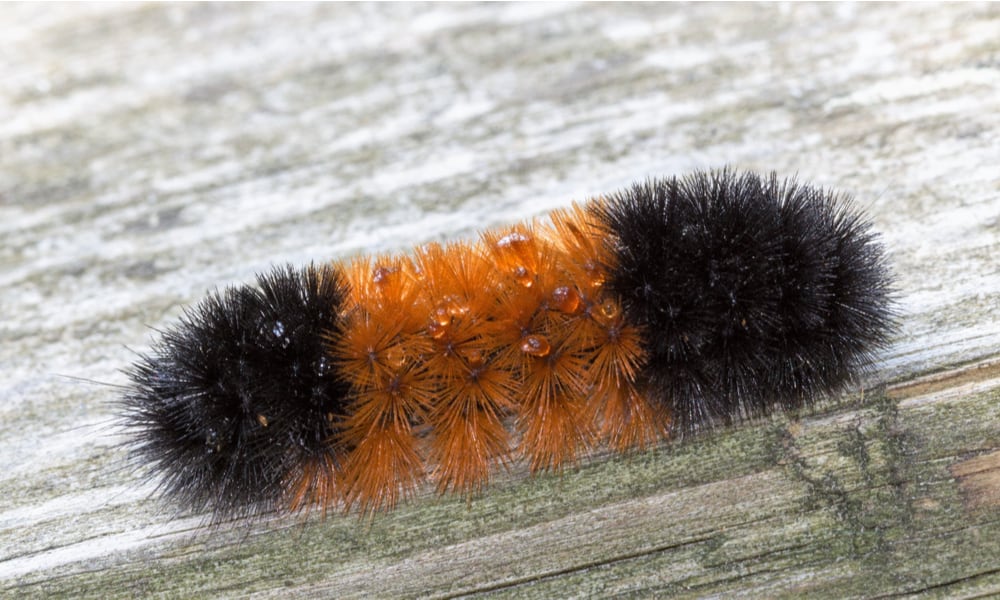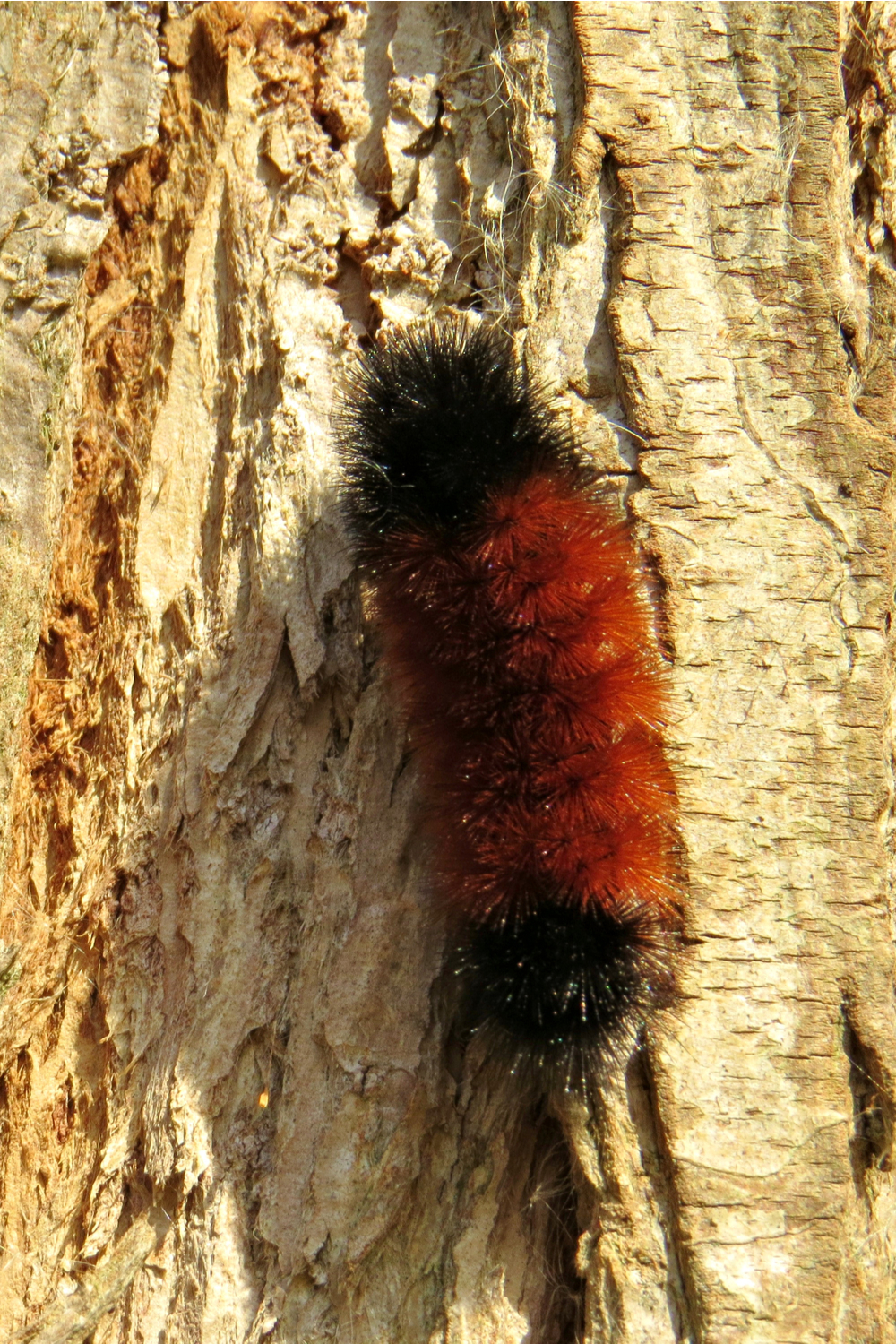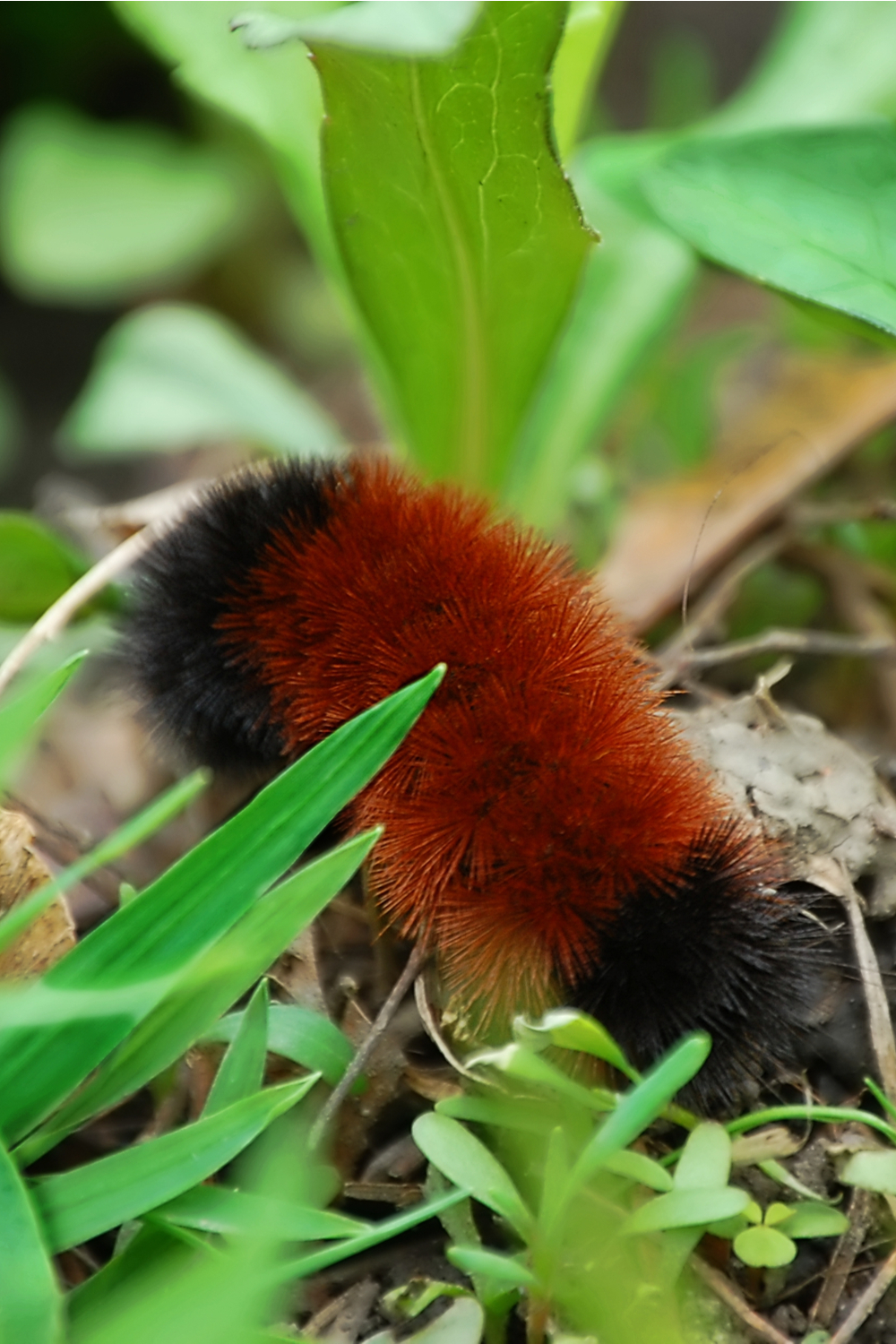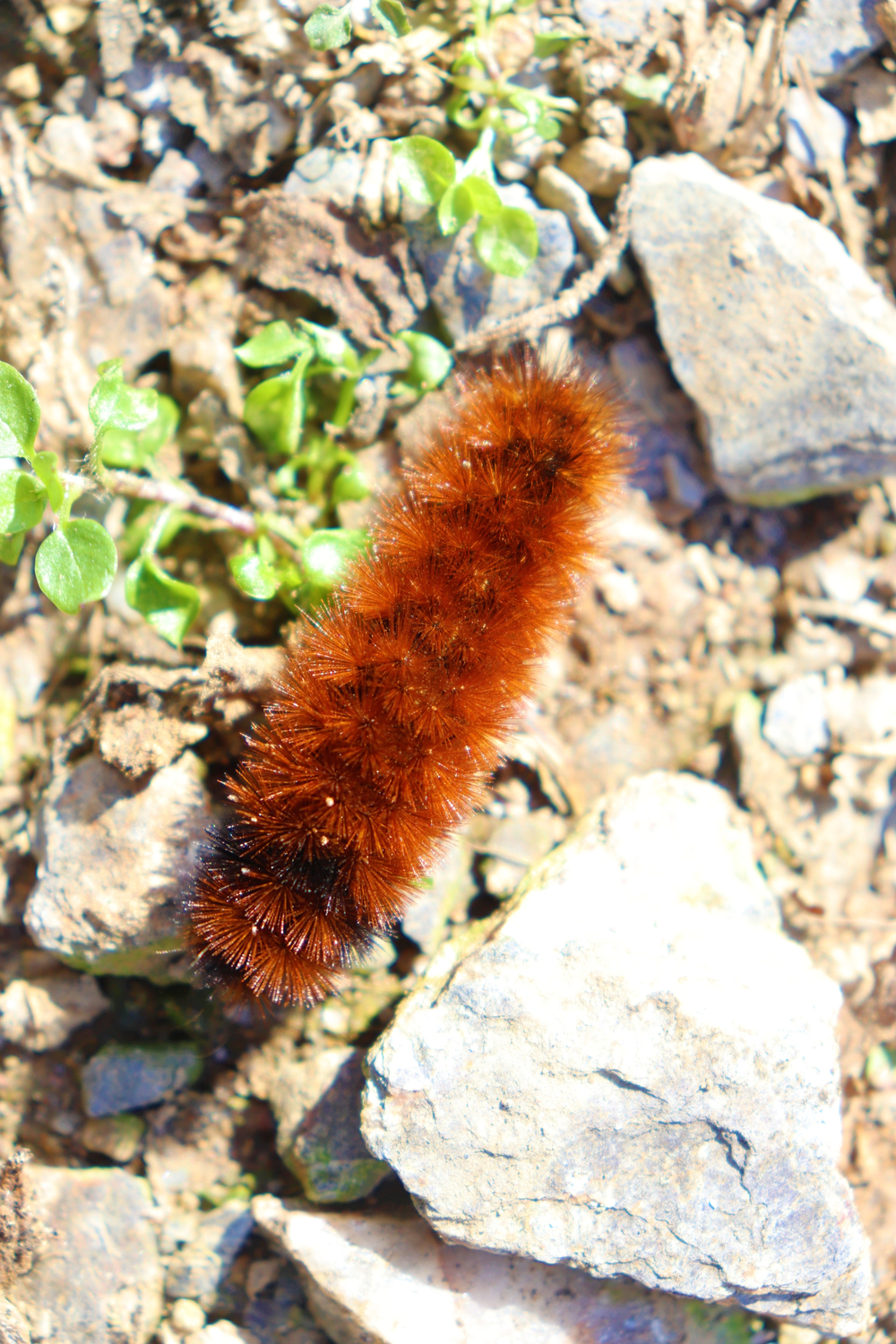One of the most colorful things that fall brings us is the beautiful wooly worms. You will see tons of these gorgeous black and orange banded creatures hiding under logs or crawling on roads trying to cross to the other side. But have you ever wondered, “What do wooly worms eat and how do they spend their day-to-day life? Read on.
Wooly Worm Habits and Biology
The wooly worm is the larval stage of the Isabella tiger moth, a lovely creature belonging to the Arctiidae family. While most people consider it a worm, it is actually a caterpillar that later hatches into a brightly colored moth with colors such as yellow, scarlet, white, orange, beige, and black.
There are many species of wooly worms, but the most well-known is perhaps the banded wooly bears. They have black edges and rusty orange color in the middle and their segmented body is covered with fuzzy-looking bristles.
The caterpillars go by many names, such as the “wooly worm”, “fuzzy bears”, “wooly bears” and “banded bears”. Some people even call them “hedgehog caterpillars” because of the way their spiky hair points outward when they curl up. The hairs, also known as the setae, help protect them from predators.
Wolly worms are active in the fall. In the winter, they go into hibernation and their body secretes cryoprotectant, a chemical substance that acts as an anti-freezing agent, preventing their organs and tissue from damage by the cold weather.
In the spring, the caterpillars thaw out and become active again. They spend a few days eating and then start building a cocoon. Inside the cocoon, the woolly bears pupate and grow antennae, wings, and other adult parts.
One month later, they turn into moths and spend the next few days breeding and laying eggs. They die shortly after this but then 14 days later, the eggs hatch, giving rise to a new generation of wooly worms and the cycle continues. Wolly worms will mostly be seen in the fall because that’s when they go out to look for a place to hibernate.
What Do Wooly Worms Eat in the Wild?
Wooly worms are herbivores and their diet comprises mainly of plant material. The moths don’t eat anything. They live only a few days to mate and lay eggs, and this happens in the fall and the spring.
Woolies that hatch in the spring eat all summer and become moths before winter. Those that hatch during fall eat for a few days, go into hibernation, and then eat a little bit more in the spring before changing into moths.
Here is a video that shows some of the leafy food items that wooly worms eat:
What Do Wooly Worms Like to Eat?
Wooly worms will primarily feed on the following:
Low-growing, soft-leafed plants: They prefer to eat herbaceous plants that have leaves and seeds. They will especially feast on:
- Violets
- Lamb quarters
- Nettles
- Dandelions
- Curly dock
- Burdock
On occasion, they will also eat leafy garden plants like cabbage, spinach, and sunflowers, becoming bothersome to farmers.
Grass: Where they can’t find their preferred meal, wooly worms will feed on wild grasses such as:
- Hairgrass
- Prairie dropseed
- Little bluestem
- Cordgrass
- Switchgrass
Grain leaves: Woolies may also eat the leaves of farm grains such as corn and barley. Note that these caterpillars will only eat leaves, so typically, they will attack the plant before it reaches its grain-bearing stage.
Trees and shrubs: Wooly worms prefer to eat plants that are close to the ground, but it is not surprising to see them feed on tree leaves too. This is a common phenomenon, especially where the worms hatch in woodland rather than in a pasture.
They will preferentially eat the foliage of broad-leafed deciduous trees like the elm, birch, and maple. You will rarely see them bother apple trees and other landscaping plants but where their normal food items are limited, they can also feed on these.
How Wooly Worms’ Diet Benefits the Ecosystem
By actively feeding on vegetation, wooly worms minimize the growth of invasive plants. Invasive plants are any new vegetation that grows in an area and spreads out of control. They successfully compete against indigenous species, congesting them and discouraging their growth.
Not just that; invasive plants alter the native habitat in such a way that they are the only vegetation that can grow in that area. Because wooly worms’ diet consists of all types of plants, it plays a huge role in curbing the growth and spread of invasive species, providing a healthy habitat for native plants.
Facts About Wooly Worms
1. It’s Believed That Wooly Worms Can Predict Winter Weather
The winter folklore around woolies has been around for so long that now many people believe it to be true. According to the myth, how much black the caterpillar has in winter indicates how severe the weather in the area will be. If the worm has more black, it means that the winter will be longer, snowier, and colder. Less black means the winter will have mild weather.
There is also another variation of the myth whereby the winter weather is predicted using the position of the black bands. If they are only located on the head, it means the winter will be colder in the beginning. If the bands are only on the tail, the winter will be severe toward the end.
The worm’s coat is also believed to play part in the weather prediction. A thick wooly coat means the winter will be cold and a thinner coat indicates mild winter.
There is the direction of travel too. If a wooly worm is moving south, it is supposedly running away from northern winter. If moving north, the winters will be bearable.
But do wooly worms really predict the weather?
Well, some people do believe in the winter legend and say it is really true. But scientific studies suggest otherwise. Experts argue that the coloring on wooly worms has got nothing to do with future predictions; it is simply a result of the many biological processes the caterpillars go through throughout their lives.
For instance, the width of the rusty band will be determined by the molting conditions. If the growing season is favorable, the worms will be bigger and fuller and their bands will be narrower. Also, the size, color, and location of the black bands will depend on the worms’ species.
2. Some Woolies Are Poisonous
While most wooly worms will just curl up into a cute fuzzy ball that you can harmlessly place on your hand, some members of this family may contain venom in their hairs and can cause an acute allergic reaction to your skin. The white hickory tussock moth caterpillar, for instance, has venomous hairs that when touched could irritate or cause redness to the skin.
3. Wooly Worms Spend Most of Their Lives in Hibernation
When winter approaches, wooly worms produce a hibernaculum that covers their entire body before going into an eleven-month dormancy. They spend over 85% of their life hiding amongst rocks that protect them from predators.
The rocks also ensure the surrounding temperatures remain stable, which prevents the caterpillars from the harmful effects of unpredictable thawing and freezing. During spring, rocks heat up much faster than vegetation enabling the ice to melt faster and the woolies to emerge much earlier.
4. Wooly Worms Produce Ethylene Glycol
That’s right! When woolies go into hibernation, their bodies are triggered to produce ethylene glycol, the same material used to make antifreeze for cars. This substance brings down the freezing point of the caterpillars’ blood, enabling them to survive the cold winters.
5. Wooly Worms Move Fast
For caterpillars, wooly worms travel pretty fast. Inching normally, a wooly usually travels somewhere between 2 and 3 feet per minute, but in the face of danger, this speed can shoot up to 5 feet per minute.
6. Wooly Worms Can Survive Temperatures Lower Than 80° F
The caterpillars’ coat is what helps them survive winter. Its job, however, is not to protect them from cold weather but to help them freeze in a more controlled manner.
Once the worms are inside the hibernaculum, their coats enable them to freeze bit by bit and that’s one of the reasons they are able to survive extremely cold winters. Woolies can actually survive an entire winter frozen inside an ice cube.
7. Wooly Worms Coat is Not Made of Wool
Despite what the name says, woolies are not covered with wool – their hair is stiff and more bristle-like rather than soft and silky.
This video shares more facts and myths about wooly worms:
Summary
Wooly worms are cute little creatures that feed on nothing but green plants. While crop-feeding woolies can be a nuisance to farmers, the majority of the caterpillars’ food comes from wild vegetation, which helps hinder the spread of invasive plants. And whether their ability to predict winter weather is true or not, wooly worms are always fun to watch.



